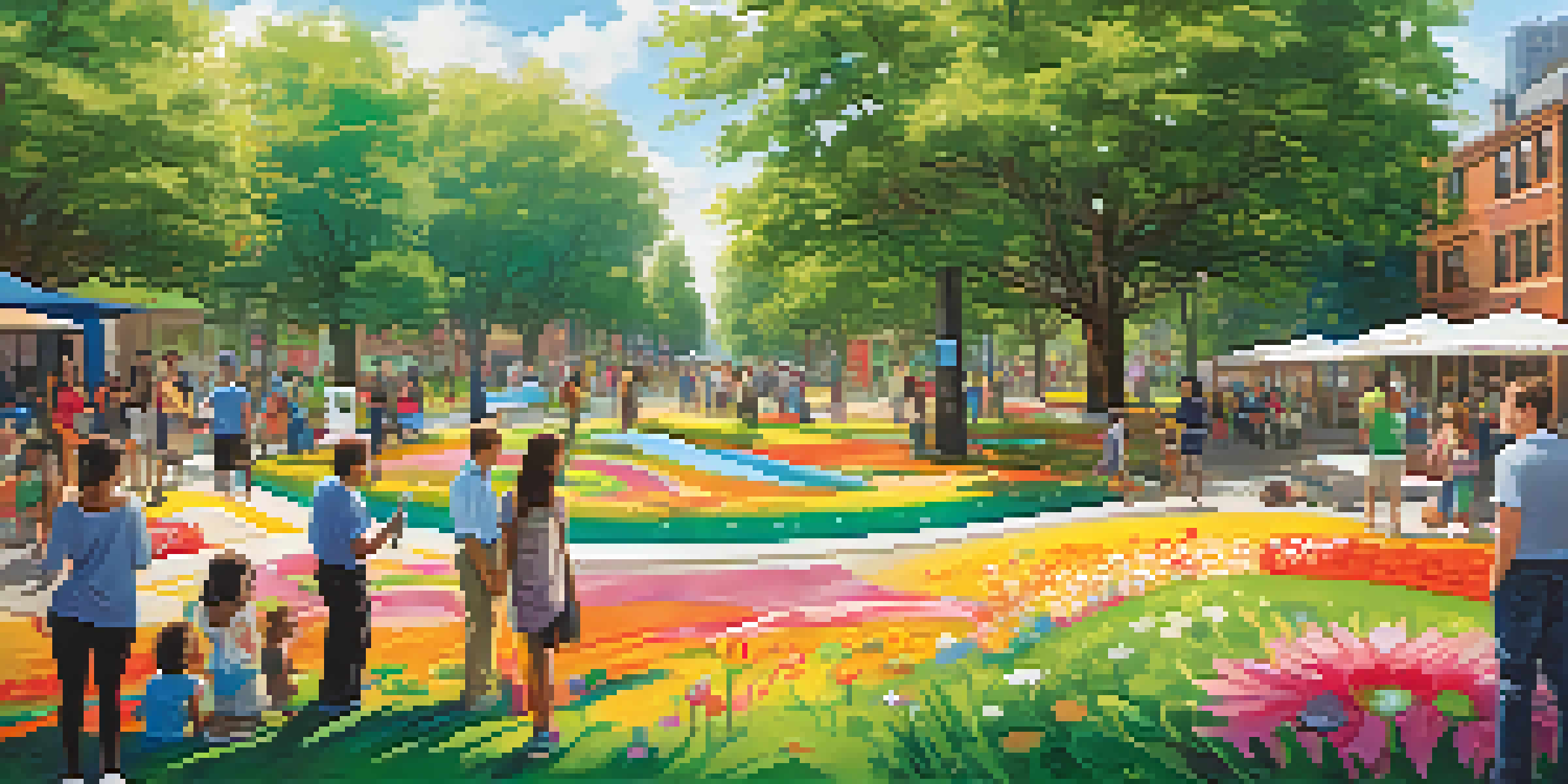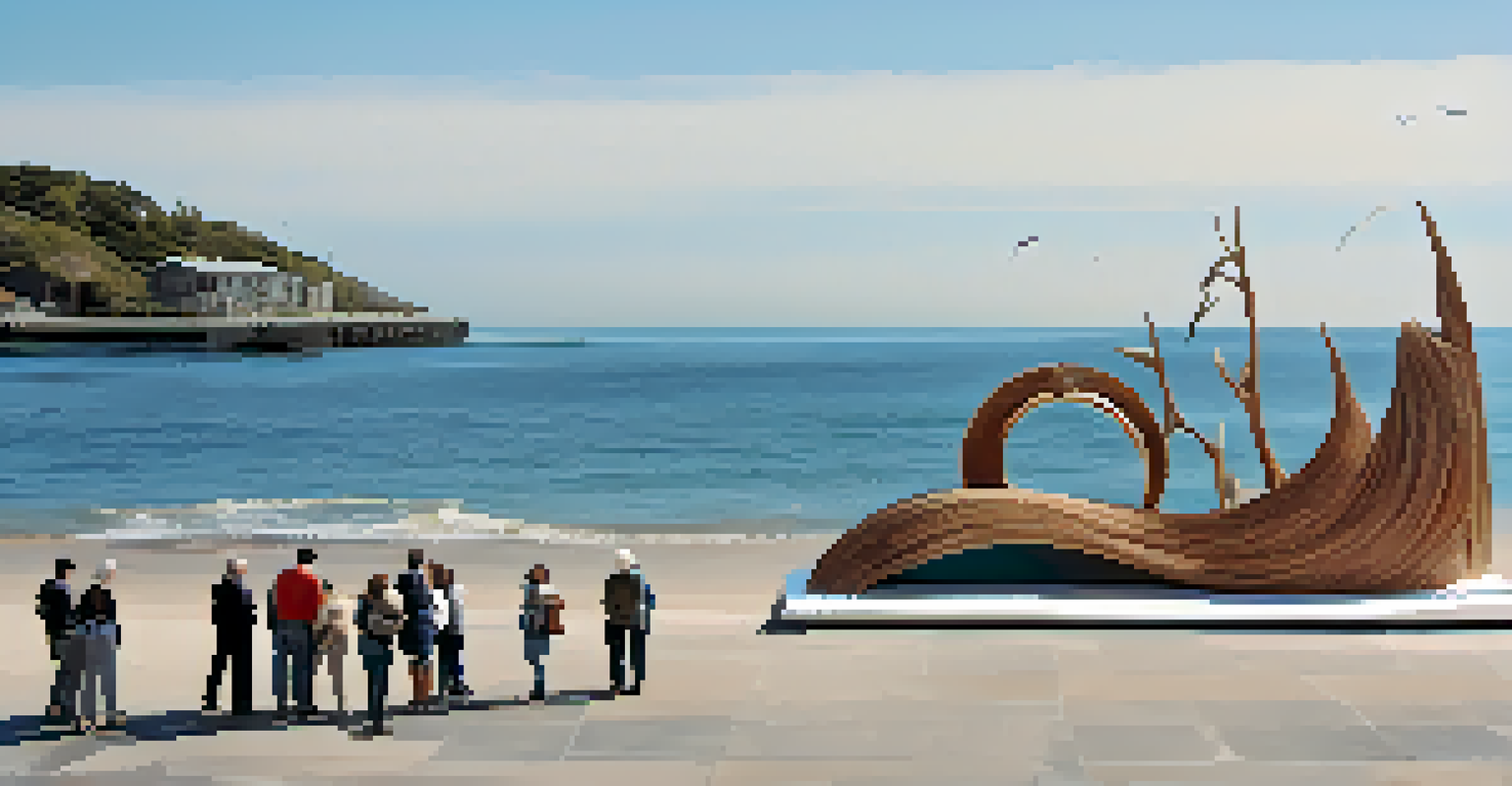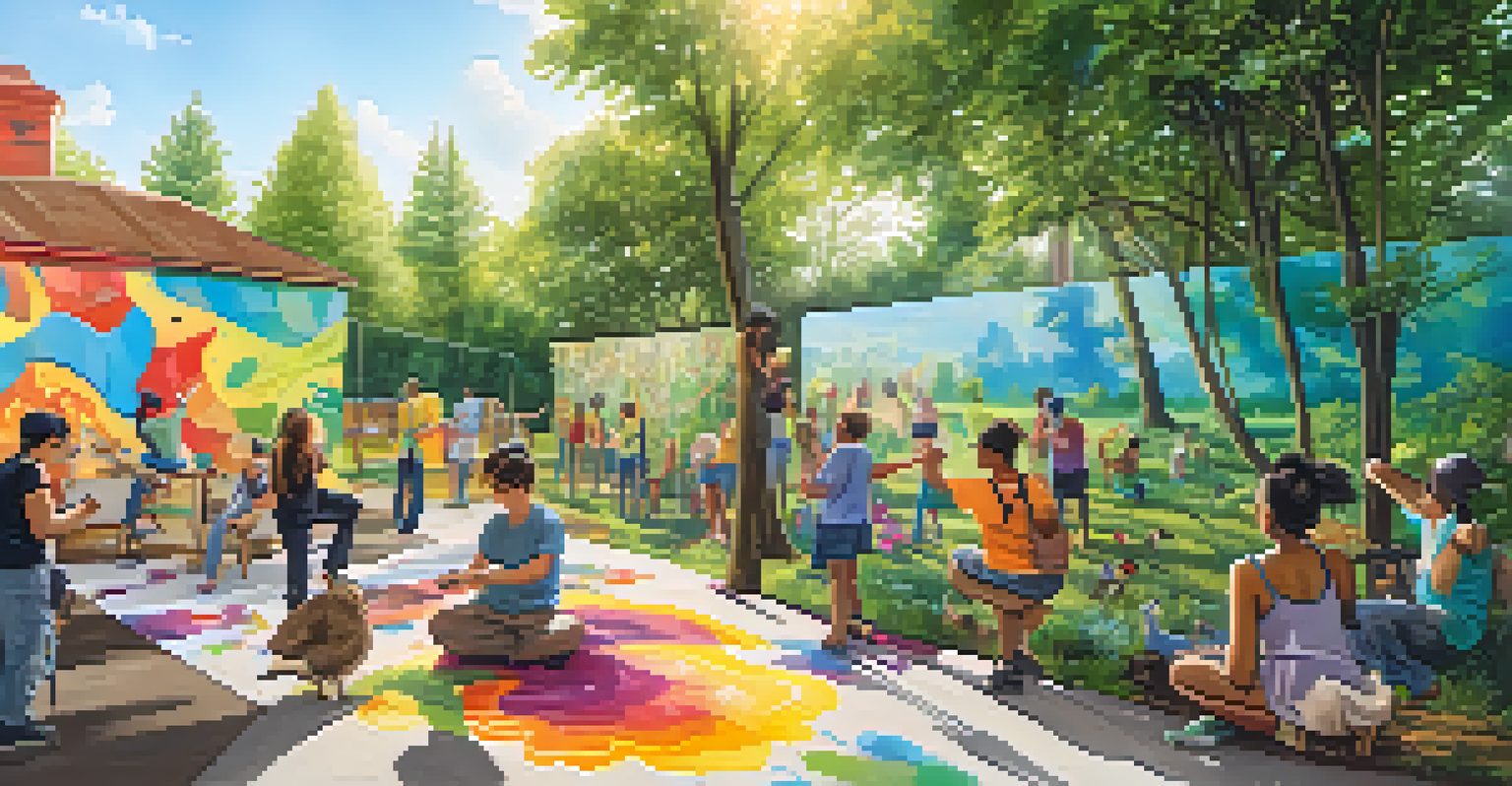Sustainable Public Art: Eco-Friendly Installations in Cities

What is Sustainable Public Art and Why It Matters
Sustainable public art refers to artistic installations that prioritize environmental responsibility and community engagement. By using eco-friendly materials and techniques, these artworks aim to reduce the carbon footprint while beautifying urban spaces. In a world facing climate change, sustainable public art serves as a poignant reminder of the intersection between creativity and environmental stewardship.
Art is not a mirror held up to reality, but a hammer with which to shape it.
Imagine walking through a city park adorned with vibrant murals made from recycled materials, or sculptures that harness solar power. These installations not only captivate the eye but also provoke thought about sustainability. They highlight how art can play a crucial role in addressing modern challenges and fostering a deeper connection to our surroundings.
Furthermore, sustainable public art fosters community involvement, encouraging local artists and residents to collaborate. This not only strengthens community bonds but also ensures that the art reflects the values and identity of the area. By engaging the community, these artworks become a shared responsibility, enhancing both pride and awareness of ecological issues.
Materials Matter: Eco-Friendly Choices in Art Creation
The materials used in sustainable public art are often sourced from recycled, reused, or naturally derived substances. For instance, artists might use reclaimed wood, recycled metals, or biodegradable paints to create their masterpieces. This choice not only minimizes waste but also inspires audiences to consider their own consumption habits.

Consider the stunning sculptures made from upcycled ocean plastics, which not only raise awareness about marine pollution but also give a second life to materials that would otherwise harm the environment. These innovative uses of materials highlight the creative potential of sustainability, proving that art can be both beautiful and responsible.
Art Meets Ecology in Urban Spaces
Sustainable public art enhances urban areas by using eco-friendly materials while promoting environmental awareness.
Additionally, many artists are now focusing on ephemeral art, which is designed to last only a short time, often made from natural elements like sand or ice. This approach encourages viewers to appreciate the transient nature of art while also minimizing long-term environmental impacts. It’s a reminder that beauty can exist in the moment without leaving a permanent mark on the landscape.
Case Studies: Cities Embracing Eco-Friendly Installations
Cities around the globe are increasingly adopting sustainable public art initiatives, showcasing how art can enhance urban environments responsibly. For example, the city of San Francisco has initiated projects that feature living walls covered in plants, which not only beautify buildings but also improve air quality. These installations serve as both art and ecological enhancement.
The greatest threat to our planet is the belief that someone else will save it.
In Melbourne, Australia, artists have transformed old, unused spaces into vibrant art hubs using sustainable materials and practices. The neighborhood of Collingwood is now home to murals made from non-toxic paints, fostering a sense of community while promoting environmental consciousness. Such projects demonstrate how creativity can rejuvenate urban spaces sustainably.
Additionally, cities like Amsterdam are known for their commitment to eco-friendly installations, including bicycle-themed art that promotes sustainable transportation. These examples illustrate how public art can align with broader city goals of sustainability, making art a vehicle for positive change in urban planning.
The Role of Technology in Sustainable Art Practices
Technology plays a crucial role in the evolution of sustainable public art, offering innovative solutions for artists. For instance, digital art projections can be used to create stunning displays without the need for permanent structures. This not only reduces waste but allows for flexibility in artistic expression, adapting to different themes and messages over time.
Moreover, advancements in materials science have led to the creation of new, eco-friendly art supplies, such as biodegradable glues and paints that leave minimal ecological footprints. These developments empower artists to explore their creativity while honoring their commitment to the environment. It’s an exciting intersection of art and science that fosters innovation.
Community Collaboration is Key
Engaging local artists and residents fosters a sense of ownership and pride in public art projects, making them more meaningful.
Additionally, technology facilitates the integration of interactive elements in public art, enhancing community engagement. For example, installations that respond to environmental data—like air quality or solar energy—invite the public to participate in the narrative of sustainability. This dynamic relationship between technology and art cultivates a deeper understanding of our impact on the planet.
Community Engagement: Involving Locals in Art Projects
One of the most significant aspects of sustainable public art is its ability to foster community engagement and participation. Local artists often collaborate with residents to create pieces that reflect their shared values and stories. This involvement not only enriches the artwork but also strengthens community bonds and pride.
For instance, community mural projects allow residents to contribute their ideas and even their creativity to the final product. This collaborative process transforms the artwork into a collective expression of identity, making it more meaningful and relevant to the area. It’s an empowering way for communities to take ownership of their public spaces.
Moreover, workshops and events surrounding the creation of public art can educate participants about sustainability and environmental issues. These educational components ensure that the message of sustainability resonates beyond the artwork itself, inspiring ongoing conversations about eco-friendly practices and community responsibility.
Challenges in Implementing Sustainable Public Art
Despite its many benefits, implementing sustainable public art is not without challenges. One major hurdle is securing funding for projects that prioritize eco-friendliness, as traditional art funding often overlooks these initiatives. Artists and communities must be creative in seeking out grants, sponsorships, or public funding to bring their visions to life.
Additionally, navigating regulations and policies surrounding public art can be complex. Cities may have strict guidelines that can hinder the use of certain materials or methods, limiting artists' ability to fully embrace sustainability. Continued dialogue between artists, city planners, and policymakers is essential to create pathways for innovation.
Technology Drives Art Innovation
Advancements in technology enable artists to create interactive and flexible installations that resonate with sustainability themes.
Finally, there is the challenge of public perception. While many embrace eco-friendly art, others may not understand its significance or relevance. Educating the public about the importance of sustainable practices in art can help foster appreciation and support, ensuring that these projects thrive and inspire future generations.
The Future of Sustainable Public Art: Trends to Watch
As awareness of climate change and environmental issues continues to grow, the future of sustainable public art looks promising. We can expect to see an increase in installations that not only beautify urban spaces but also actively contribute to ecological restoration. For example, projects that involve planting trees or creating green spaces alongside artistic elements are likely to gain traction.
Moreover, the integration of technology in public art will continue to evolve, leading to more interactive and immersive experiences. Artists may leverage augmented reality to create digital overlays that educate viewers about sustainability, allowing them to engage with the artwork on a deeper level. This fusion of technology and art opens up new avenues for creativity.

Finally, we’ll likely witness a growing movement toward community-driven projects that prioritize inclusivity and representation. As more voices contribute to the narrative of sustainability, public art will reflect a broader spectrum of experiences and cultures. This trend not only enriches the art itself but also empowers communities to take an active role in shaping their environments.